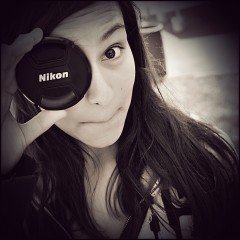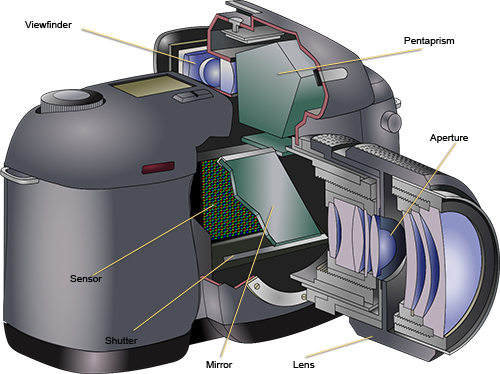
Look through the camera lens, fine tune the camera settings and click the shutter-release to imprint the reality on the photographic frame. But what happens behind the scene. How does the camera actually record the data in the form of images?
The camera is a compact piece of technology made up of various components — the lens, the aperture, the shutter, etc., which collaborate together to capture the scene. With advancement of technology, the basic structure and composition of the cameras have undergone a lot of change making the camera an intelligent device to work with. While in the days of film you had to manually fine-tune the camera settings, the digital cameras relieve you from the complexities of manual settings. With time, the cameras have become mature but the basic principles and functioning of the cameras, more or less remain the same.
The primary function of the camera is to capture the light. The mechanics of the camera involves several components to allow the light to pass to the image sensor. These components of the camera not only allow the camera to make the exposure, but they also enable the camera to control the light and various effects. Here are the basic parts and controls of the camera:
- Viewfinder: Viewfinder is a slot in the camera which allows you to preview the scene.
- The Shutter: The shutter covers the sensor (or film in case of a film SLR). The shutter opens up when the shutter-release button is pressed to allow the light to fall on the sensor/film and create a capture. The speed of the shutter can be controlled which determines how long the shutter is open and what amount of the light passes through. The shutter-speed is measured in seconds and varied typically from 30 sec. to 1/4000 sec. The shutter has to be extremely light and thin to move at high speeds (about a few thousandths of a second). A high shutter-speed allows the camera to freeze movements in the scene. A slow- shutter-speed may induce motion-blur in the scene.
- The Lens: The lens allows focusing, zooming and the use of an aperture to control the amount of light. The optical qualities of the lens determine the quality of the photographs and the cost of the lens.
- The Aperture: The aperture is the opening inside the lens which allows light to pass through. The aperture can be varied and its value is measured in f-stops or f-number. A smaller f-number represents a wider aperture and a larger f-number represents a smaller aperture. The aperture not only controls the amount of light, it also determined the depth-of-fieldin a scene.

Cross Section Of DSLR
Basic Principle Of The Camera
The basic feature of the camera is to capture what the camera sees. When you press the shutter-release the camera makes an impression on the film (or sensor in digital cameras) to capture the data. The camera sees in terms of light reflected off the subject or the amount of light in the scene. When you point the camera towards the subject or the scene, the reflected light from the scene (or the subject) is passed through the camera lens and as soon as you release the shutter, the camera shutter opens for the fraction of time to expose the film or the camera sensor to the light to capture the impression of light and save it as analog or digital data. In the days of film cameras, a roll of photo-sensitive sheet was placed instead of the digital sensor in digital cameras.
In film cameras the photographs were captured on the film. The exposed film was then rolled forward to prepare the camera make another exposure. In digital cameras, the light striking the image sensor is converted into discrete signals and saved to the internal memory or the buffer from where the data is transferred to the memory cards used by the digital cameras for storage.
While the film used by the film cameras was processed in darkroom to create the final prints, the digital camera offers you the flexibility of transferring the images to your computer, process the images in image-editing software (if required) and printing the selective images and storing the rest of the images on your computer itself.
How Does The Camera Work?
The light reflected off the subject enters the camera through the lens where it passes through the lens aperture. It then reaches a mirror temporarily tilted at 45 degrees which reflects the light at 90 degrees. This light then is reflected by a pentaprism glass and exits through the viewfinder where it reaches the eye of the photographer and makes it possible to preview the scene.
When the photographer is ready to take the shot, the mirror (which was earlier tilted at 45 degrees) moves out of the line and the light passes straight inside. When the photographer presses the shutter release button, the shutter covering the film or the camera sensor opens up and light falls on the sensor or the film thereby forming the photographic impression. The shutter then closes after a brief delay (depending on the shutter speed setting), the mirror moves back into its previous position and the camera is ready for another shot.
Simple, was it?


This was an extremely helpful website :) Thank you! x
Really excellent thank you for sharing it.
:-)